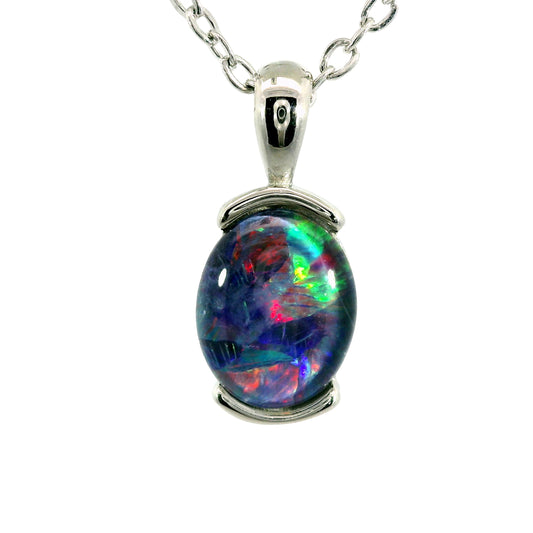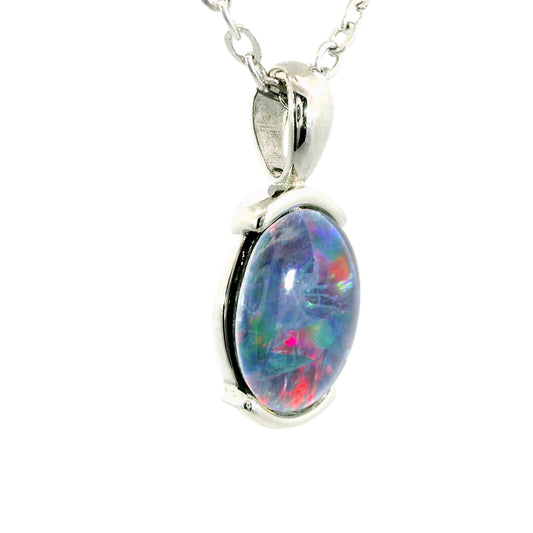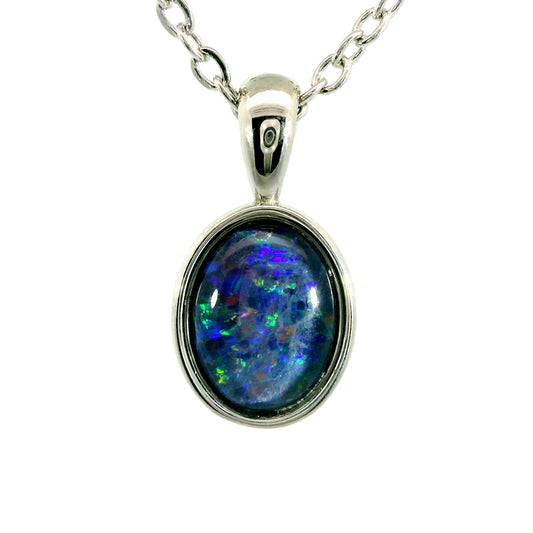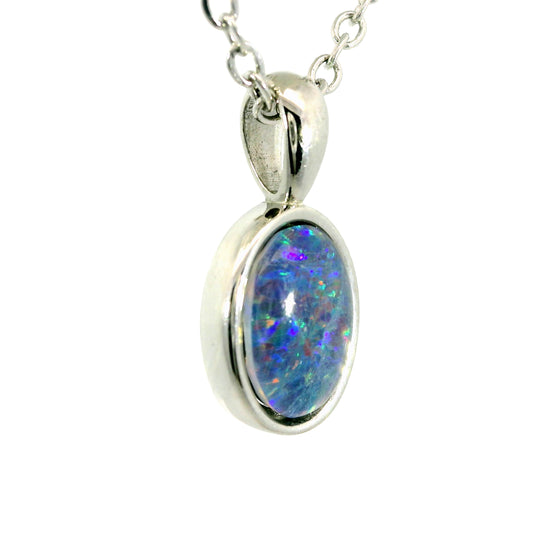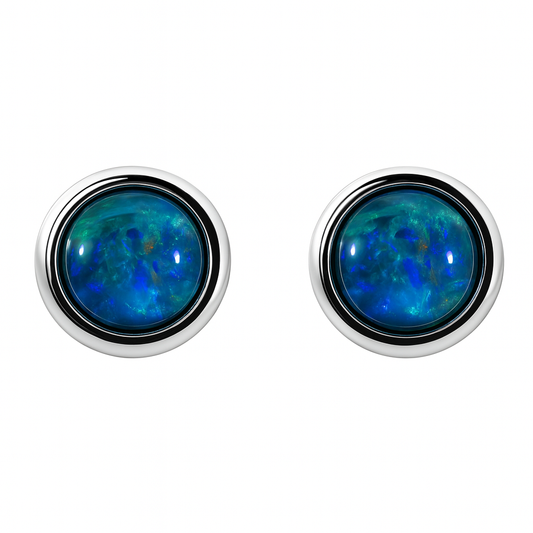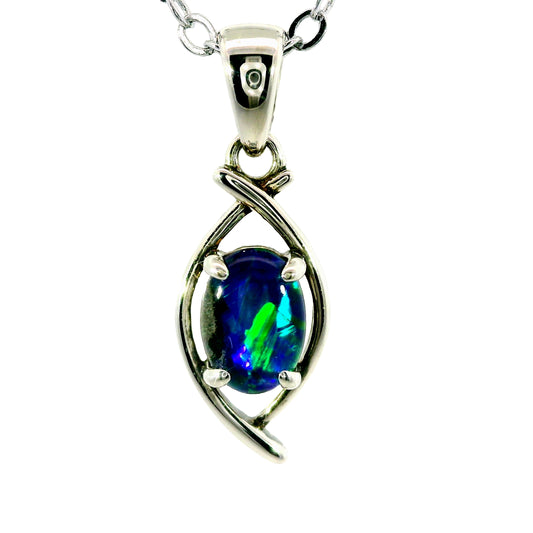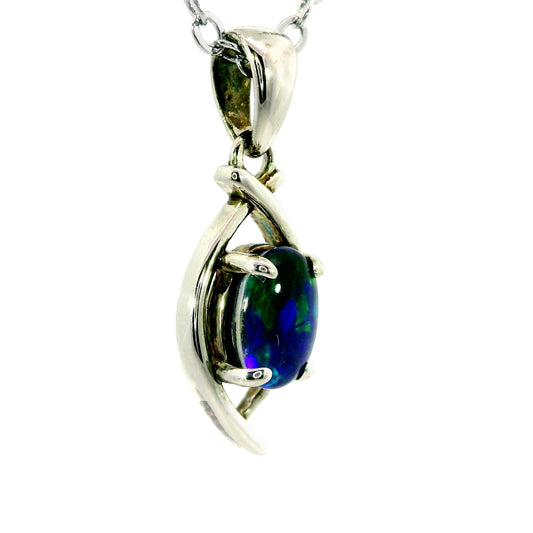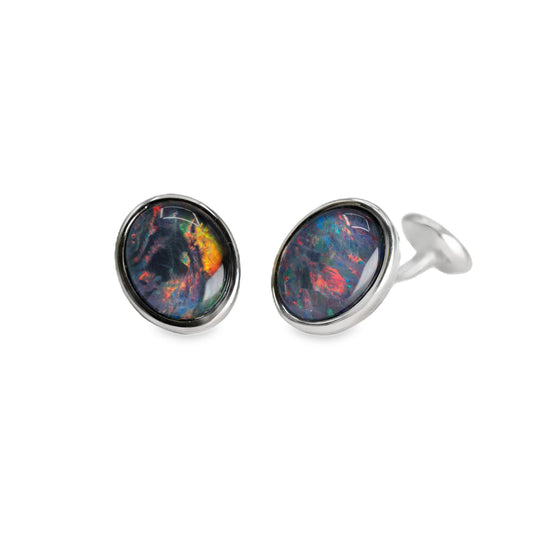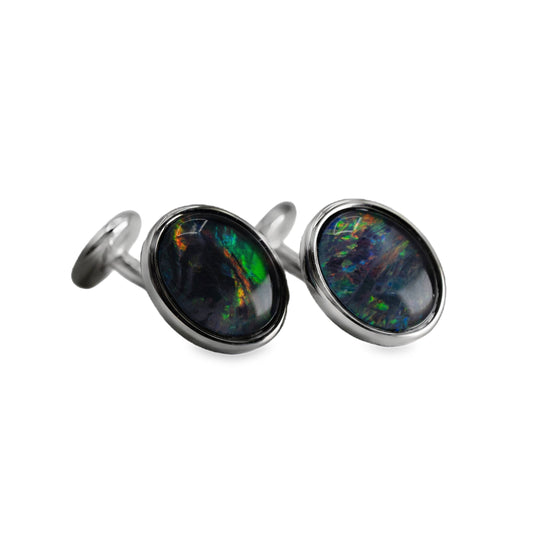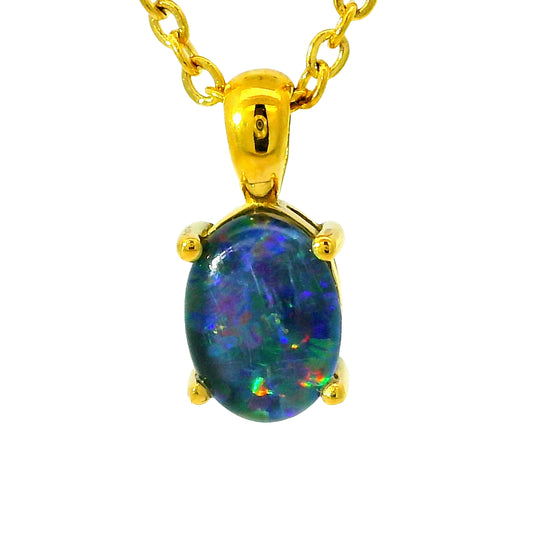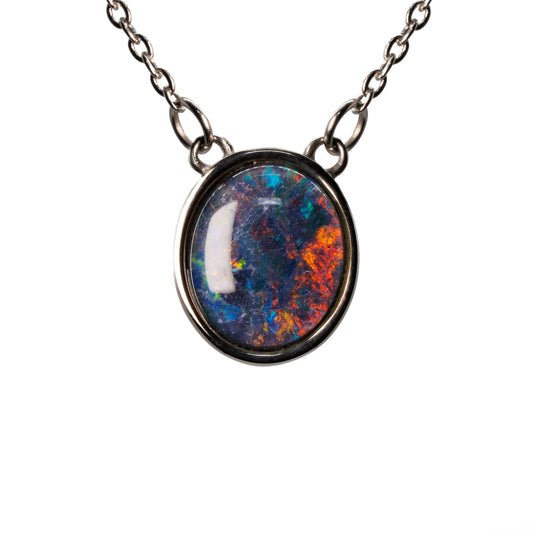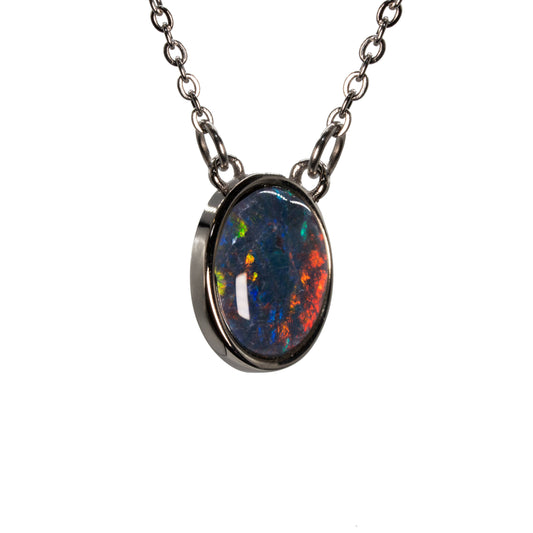Opallised Shell Fossil, the Story Behind Australia’s Best kept Gemmological Secret

The World’s Most Valuable Gemstone || Centuries of Fascination
|
‘In them you shall see the living fire of ruby, the glorious purple of the amethyst, the sea-green of the emerald all glittering together in an incredible mixture of light.’ - Pliny the Elder, Roman Philosopher 1st Century AD. |
Famous personalities throughout time have looked at opals with a keen fascination, viewing their colours as an almost ‘divine’ creation. These natural wonders were prized among many for their vivid colours and were used throughout history as declarations of wealth, power, and love. Onomacritus, an ancient Greek prophet, once wrote “the delicate colour and tenderness of the opal reminded him of a loving and beautiful child”, highlighting ancient popularity for the gemstone.
 Artists such as Laurence Hope have looked to such a mineral with both inspiration and fascination; very soon after discovering opals, became an avid collector, with his 1977 exhibition of ‘Opal the Rainbow Gem’ at the ICA in London, featuring an “artists’ eye view of the opal”, which were images of the gemstone that the artist had taken under a microscope.
Artists such as Laurence Hope have looked to such a mineral with both inspiration and fascination; very soon after discovering opals, became an avid collector, with his 1977 exhibition of ‘Opal the Rainbow Gem’ at the ICA in London, featuring an “artists’ eye view of the opal”, which were images of the gemstone that the artist had taken under a microscope.
The most famous admirer, however, would be Elizabeth Taylor. She was once quoted in saying “I adore wearing gems, but not because they are mine. You can’t possess radiance, you can only admire it.”. Such a statement could also be seen through her collection of extravagant jewellery, in which expensive opal pieces could be found.

To Hold a Rainbow || How Light Creates Colour
The creation of Opal colour is unique as this is the only Gem on earth where you can (literally) ‘Hold a Rainbow in your hand’! As unexpected as it may seem, the ingredients behind the sought-after gem are quite commonplace.
Opal is formed when water containing dissolved silica seeps within beds of Australian soil, where the elements of water and silica are deposited into cracks deep within the earth (often caused by natural faults, or decomposing fossils). As the water subsequently evaporates, the silica particles react and become ‘cemented’ together, forming the structure known as opal.
This is an interesting and unique process, as the colour and beauty of these gemstones are dependent on chance, making them a gem that is incredibly rare. The structure of the silica is entirely responsible for the opal’s colour and vibrancy, as the light will bend around the silica structure in order to produce the variety of radiant colours that the gem is known for. This process is similar to other gemstones, in regard to how the mineral interacts with light; the colour of a gemstone is a direct result of how the gem absorbs light. Overall, minerals, in general, have different ways of absorbing light, and therefore will result in different colours and variations. The same is true for opals. However, unlike other gemstones, opal is not a mineral, as it contains no crystalline structure. Rather, it is comprised of microscopic spheres of silica, and is arranged in an orderly pattern; this means that, although opal produces colour through light like other gemstones, the colours require structure within the rock in order to form, as the light will bend around the obstacle (the silica pattern) in order to create a unique design! This is why no natural opal is the same.
Fossils Made of Opal
Fossils are a unique topic. Although they are widely known and seen throughout the media, they are often left undiscussed, and therefore not truly understood.
Their existence can hold a key aspect of the past, lending knowledge to current generations that would not have been found otherwise. They are the remains (or sometimes, merely impressions) of once-living organisms that have been preserved in rock, only to be discovered years later. Occasionally, once this discovery is made, it is discovered that the remains have been opalised! This is a process in which the cavities within the fossil act like regular crevices within the ground, allowing for the spaces between organic molecules to become filled with either dazzling colour (transforming the opal into an actual gemstone), or creating the more commonly found ‘potch’ (a substance which opal is found on, often regarded as ‘common opal with no colour’).
What is fascinating is that, sometimes, the opal is seen to completely replace the original tissue! This can be seen in special instances where elements such as teeth, bones, and seashells have been formed into solid opal! It is extremely rare to not only find a fossil within Australia but for that specimen to have an opalization form around the specimen, making fossilised opals quite a rare accessory!

Opalised Shell
Opalised shells are incredibly unique in their existence, with many of these pieces coming from opal fields in Coober Pedy, whilst more valuable varies from Lighting Ridge. The reason for this is because, originally, these opal fields within Australia were formed along the bottom of a large (yet relatively shallow) inland sea, allowing for a variety of sea-life to inhabit the area. Such animals included mussels, sea snails, belemnites (which are squid-like animals, similar to cuttlefish in appearance), as well as some (now extinct) species of marine life, such as Pliosauroidea (also known as Pliosauroids and Plesiosaurs). When these creatures eventually died, their bodies would sink, the flesh would be eaten or decompose, and then the hard calcium remains would (eventually) be buried in the sand.
As time progressed and the sea dispersed, various types of clay were formed from these sands, allowing for the shells and bones of these animals to create formations of opal. In some cases these shells (as they were made of calcium carbonate) dissolved in the sand, leaving cavities that could be filled with other minerals (even opal). This ancient inland sea is now long gone, and in its place stands the Australian outback; this allows for miners to dig-up the remains of past life, perpetuating the beauty hidden under Australian soil.
Fossils are already scarce within Australia, so it is incredibly rare to find an opalised shell with clarity and vibrant colour. In addition, these artifacts are made rarer by how they are dispersed within Australia; these stones are often found only within small areas, which is unlike other opals (which usually can be found throughout an entire mine). These rare fossils are often sought after by ‘gougers’ (a name given to miners who work on finding valuable opals).
|
“It’s a truly unique area [Australia]...There’s no place in the world like this, where you have dinosaurs preserved in beautiful opal.” - Phil Bell, author at the University of New England in Armidale, New South Wales. |
But one question still remains, why go through all the trouble to find a shell? Well, often these rarities are heavily sought after by opal collectors, with opalised shells being high on their list of ‘desirable pieces’. These items are not only coveted for their rarity, but for their unique shape and abstract form; this is especially true if the found opal is part of a fossil, or in a shell, with the prices of such pieces beginning at around $1000 (with crystal opal shells being far more valuable). Often, opal dealers will value the quality of the opal, and then adjust the price to accurately reflect the rarity of the fossil or shell.
Opal Fossil from Graeme Blaiklock on Vimeo. Australian Opal Cutters
Australia’s Opalised Dinosaur
Pliosauroidea is an extinct form of marine reptiles, with fossil specimens being found in places such as China, Australia, Europe, and Africa. These creatures were crocodile-like in appearance, with large heads, massive jaws, and could range anywhere from 4-15 metres in length. A Plesiosaur discovered in 1987, who had been given the name ‘Eric’ was found to have been not only fossilised but completely opalised. The fossils were not turned into jewellery (which did happen to many fossils found in the late 1980 - 1990s); this discovery allowed for an in-depth understanding of Australian climate many years ago and sparked a unique interest in fossilised specimens.

There have been a few dinosaurs (Pliosauroidea and other) that have been discovered within Australia. In Queensland, a dinosaur was found that weighed an estimated 30-40 tonnes (30000-40000 kilograms) and was measured at around 30 metres tall. This massive specimen is currently being stored at the Eromanga Natural History Museum in Queensland.
Matthew McCurry - curator at the Australian Museum (Sydney) - was quoted as saying: “Any opal specimen is of immense scientific value”. This is because any opal, regardless of its value, offers unique information into Australia’s past climate, and the rich history of the country as a whole. New species of dinosaur have been discovered from the analysis of opalised fossil, an example would be the Weewarrasaurus pobeni, a (presumably) dog-sized herbivore, which was discovered through the discovery of its opalised remains.

This is a truly monumental discovery, because dinosaur fossils are so rare, that to uncover a fossilised jaw with teeth is ‘miraculous’. This discovery has not only expanded our understanding of dinosaurs but the biological diversity that existed so long ago, as it adds to the evidence that there were different herbivores that existed in the Southern Hemisphere than were in North America.
With the further exploration and discovery of fossils, more can be learnt - and therefore learnt - about early Australian, allowing for a clear picture of what life was like at an earlier time.
Opalised Dinosaurs from Graeme Blaiklock on Vimeo.
Controversy Surrounding Fossilised Jewellery
Currently, within Australia, an individual requires an ‘export permit’ in order to ship fossils outside of Australia, allowing for the fossil industry to be regulated. As of recent years, there is an ambitious attempt between local mining communities and paleontologists (scientists who study fossils) to preserve the opalised fossils. In an effort to reduce the damage and raise awareness, the Australian Opal Centre was founded in the late 1990s; this centre currently holds a diverse collection of opalised shells and fossils from around the world and has been largely curated through donations from local miners.
|
“If it were not for the opal miners—many of whom have sharp eyes and regard the fossils with as great a sense of awe as paleontologists do—we would not have, or know anything about, these fossils…” - Jenni Brammall, paleontologist and gemologist. |
Legally, a miner will hold the mineral rights to any precious material they uncover, which includes opalised fossils. Some paleontologists have a problem with this; when money gets tight - which often happens in such a profession - a miner could break an opalised fossil in the hopes of personally extracting precious opal, whilst others could sell the fossil overseas. The reason this is believed to be problematic is due to the rarity of fossils, and the history they hold.
Bob Foster, a miner who worked in the 1980s, gives insight into the culture of fossils within mining communities. "We used to smash them up looking for opal in them because that's what we were out there to do.."After several months of finding these things and smashing them up, I said, 'I think I better go and find out about these'." He then took his discovery of the fossilised imprints to the Australian Museum in Sydney; this is what led to the discovery of more fossilised opal, which had been crushed by miners who had thought of it as ‘seam opal’ (also referred to as ‘potch’). The Foster family have since donated the discovered fossils to the Australian Opal Centre at Lightning Ridge so that they might be back "...where they're supposed to be."
44 Opal Fossils and "Millions of Years"-HD 720p from Graeme Blaiklock on Vimeo.












































































































